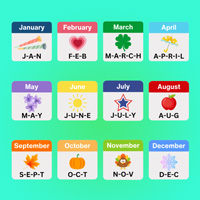Learning Tips Articles
Misconception: There is only one sign language
Question: Is sign language universal throughout the world? ...and if not, why don't we just make it that way since it would make the world have at least one language that everyone could understand and use?
Answer: Unfortunately sign language is NOT universal throughout the world. There is American Sign Language, British Sign Language, Spanish Sign Language, Japanese Sign Language, Ausian (Australian Sign Language) and many more. In fact, there are even multiple sign languages used in the United States (American ...
Addressing Top Signing Misconceptions
My next few blog posts are going to focus on the "TOP MISCONCEPTIONS" or questions that I seem to get asked about on weekly basis either in person or from users of the site. For those of you that go back and read old blogs these may sound familiar but they still seem to come up, so I thought I would readdress them and maybe word them a little differently to see if we can make them more easily ...
Signing is like being a thesaurus
I am often asked "I can't find the sign for....." And it will be words like FINALIZATION or SUMMARIZATION. My answer is often...."It is there." You may not get a result when you search for FINALIZATION, but that does not mean you are out of luck.
Unlike the spelling in the English language where one spelling is equal to one word, sign language is different. There are many signs that can mean more than one word. We ...
The Importance of Facial Expressions
Facial expression plays a very important part in the meaning of a sign. The same exact hand-shape and movement can totally change meaning because of the facial expression that is used to accompany it.
One example of this is the word MUCH. The degree of how much can totally be determined by the facial expression alone while the sign stays the same.
Other examples would be the words INTERESTING and FUNNY. Both of these words can be changed to ...
The difference between ASL and English signs
One question many new signers ask me is: "What is the difference between ASL signs and English signs?" and "What does it mean to have an initialized sign?" These are two really good questions. It is important to understand the difference, particularly when signing to a member of the Deaf community.
Some background information
You may have noticed that sometimes people are referred as deaf (little d) and other times as Deaf (big D). ...
Directional Verbs
There are a group of verbs that are often referred to as Directional Verbs. These are also known as Indexical verbs or Verb Agreement. These verbs do just what the term suggests; they show directionality. They do this by using an element of motion that indicates one or more referents (see post on Setting Up People, Places, and Things for more on referents). These verbs can be used pretty simply by setting people up, then using ...
Setting Up People, Places and Things
The use of space is a very important feature in American Sign Language. The way to be able to refer back to different people, places or things (referents) is to use the space around the signer. You do this by setting up the space. This is done in a three dimensional manner. It can be done in the space to the left or right of the signer, in front of the signer, in a semi-circle around ...
Making signs plural or in the past tense
We have received several emails asking how to make signed words plural or showing if something happened in the past, as well as having emphasis to show desire.
There are a few different ways to do this:
One way to show an emphasis or plurals is to repeat the sign. For example, if you are wanting to say “He wants that really bad!” You would sign WANT+WANT+THAT+HE. That double use of the sign want shows that he really wants ...
How do I get my signs to flow together so that I don't look choppy when I am signing?
As a beginning signer, it is just natural that you will be choppy. Once you get a larger sign vocabulary, you will not be so worried about searching for a way to say something that you know the signs for and you will be able to focus on the flow of your signs.
When you sign music it also helps with the flow if you let the music guide you. There are a few different sites on the internet ...
How long until I am a fluent signer?
Many people often ask me this question. That is really a hard one to answer because everyone's rate of learning a new language varies greatly. The motivation behind the learning is going to be a key factor as well as the opportunity to actually practice what you are learning with multiple signers.
It is important to practice signing with, and reading from, many signers as you learn so you don't just get used to the way one particular person ...
ADVERTISEMENTS







